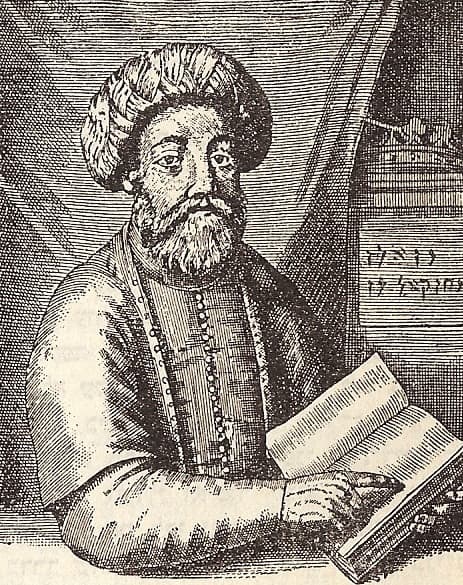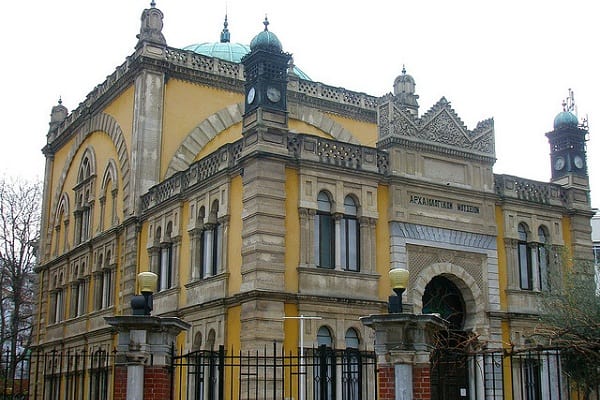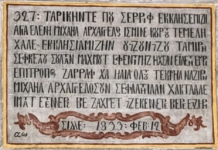“A Doenmeh friend of mine told me his father had informed him that his father’s mother used to go to the beach every Friday to recite a prayer in Ladino. My friend’s father remembered only the phrase ‘Esperano a-te’ (I will wait for you [O Messiah]).”
From A Scapegoat for All Seasons: The Dönmes or Crypto-Jews of Turkey by Rifat Bali

Who is it the woman in the quote above claims to be waiting for? We can presume that she is waiting for Sabbatai Sevi, a rabbi from İzmir who declared himself the messiah in the 1660s. This figure gained a huge following among Jews of both Sephardic (Mediterranean) and Ashkenazi (European) stock. So much so, in fact, that Jews from all around the Ottoman Empire and Christendom abandoned their livelihoods to join him for what they believed would be the restoration of the Holy Land to the Jews. The influence of this holy man disturbed Sultan Murad IV both politically and spiritually, as documented by an Ottoman chronicler:
The Jewish traitors believe you are a prophet!’ God forbid! The sultan cannot believe this… While his brave and pious warriors are struggling the infidel holdout on Crete… Jews have ceased work and flocked to the side of this rebel, who has declared that he and not his eminence should rule the imperial dominions. How could he dare to contradict the fact that Muhammad was the seal of the prophets?
The Sultan promptly had Sevi arrested and interrogated. Sevi’s followers waited in suspense to see if their prophet would be executed. In the end, he saved his own life by converting to Islam, officially recognizing the pre-eminence of Muhammad as the final prophet rather than himself. Marc David Baer, author of The Dönme: Jewish Converts, Muslim Revolutionaries, and Secular Turks, a highly influential work on the topic, points out that the “radical failure of their messiah ironically led not to disappointment and despair, but confirmation, renewed confidence and the ecstasy of knowing that one cannot know the mysteries of God’s chosen.” While this conversion severely disappointed many of his followers, an estimated 200-300 families made the conversion with him, creating a new sect of Judaism, the “Sabbateans” or “Dönmes.”
Baer suggests that so many families fervently followed Sevi in part because of the somewhat radical reforms he brought to Jewish tradition. His teachings are often described as “antinomian” — that is, they call on worshippers to intentionally break sacrament and violate religious prescriptions in a ritualistic way. Some examples include eating non-Kosher foods, allowing women to be called to read the Torah during services, and moving the Sabbath from Friday to Monday. Baer implies in his work that converting along with Sevi was a pragmatic choice made by those who wished to continue pursuing this non-traditional, experimental Jewish lifestyle.
The antinomian practices of the Dönme are often compared with those of Sufis, who often intentionally violate the prescriptions of orthodox Islam by consuming alcohol ritualistically and integrating music into their services. It is also known that the Dönme integrated elements of Sufism into their own belief system. Therefore, it should come as no surprise that Salonika (modern day Thessaloniki), known as the cultural heart of Sephardic Jewry and a place with a very active Sufi community, became the town of the Dönme in the late 17th century and remained that way until the fall of the Ottoman Empire.
Although the Dönmes were a secretive, insular community, a few fundamental things are known about their beliefs. During his lifetime, Sabbatai Sevi laid down eighteen commandments for his followers. These included prescriptions to maintain the appearance of being Muslims and to avoid marrying outside of the community. It is also known that the Kabbalah figured heavily into their understanding of the universe and that the Sufi belief in the transmigration of souls was very important to them.

As for Dönme practice, not so much as been documented. Dönmes typically performed rituals in the homes of their followers. Although the New Mosque in Salonika served as a public gathering place, there are virtually no spaces (apart from cemeteries) that bear traces of Dönme ritual. It is important to note that fissures formed within the community during the 18th century, leading to three main groups within the Ottoman Empire: the Yakubi, the Karakaş and the Kapancı. Beliefs and traditions varied between these groups, creating an added difficulty in determining what “Dönme practice” is, or was.
Widely accepted by the ruling Muslim population, the Dönme prospered within the Ottoman Empire during the 18th and 19th centuries. They held prominent positions in government and established educational institutions such as the Feyziye and Terakki Schools (these later migrated from Salonika to Istanbul and continue to operate). Even one of Atatürk’s schoolteachers, Şemsi Efendi, was a Dönme.
The bulk of the Dönme of Salonika were shipped off to Istanbul in the 1923 population exchange between Turkey and Greece. This event, one of the stipulations of the treaty ending Turkey’s war with Greece, forced millions of Anatolian Greeks out of Turkey, while Muslims—Turks, Albanians, Bosnians, etc.—were sent packing to Turkey.
Uprooted from the city of Salonika and under pressure to conform to the vision of a “modern Turk” propagated during the early decades of the Turkish Republic, most of the Dönme abandoned their traditions and denied their identities. As one can see from the quote at the opening of this piece, the chain of remembrance is highly fragmented with only vague, scattered recollections carrying beliefs and traditions from one individual to another.
Throughout their history, Dönme had been the target of a considerable amount of criticism from the Jewish community. Rabbis often decried them as heretics, and accused of trying to corrupt other Jews. These sorts of accusations became a popular trend among the general Turkish population during the early decades of the Turkish Republic. The land the Dönme came to in the 1920s was in the throes of a bout of ethnic cleansing and homogenization. This was the beginning of “hidden Jew” rhetoric that has become a popular feature of conspiracy theories in Turkey. Although Dönme identity is nearly extinct, as Marc Baer says, the one place the Dönme refuse to die is in the minds of their enemies. Even today, hundreds of thousands of copies of works are sold like Söner Yalçın’s Efendi: Beyaz Türklerin Büyük Sırrı (“Master: The White Turk’s Big Secret”), which claims the secret Jewish affiliation of influential Turkish figures. During our interview, C.M. Kösemen stated that the label of ‘Dönme’ is a demonic mask that can be conveniently placed on whoever you like. This is very easy as the real Dönme will not speak up to defend themselves.
The information featured in this article was acquired in large part from Marc David Baer’s book “The Dönme: Jewish Converts, Muslim Revolutionaries, and Secular Turks.”
Please visit the site tomorrow to read the first part of Dayla’s interview with Mehmet Kösemen, author of “Osman Hasan and the Tombstone Photographs of the Dönme.”
Dayla Rogers is a contributor to Yabangee












A fascinating read!
Very good read.
Loved this!